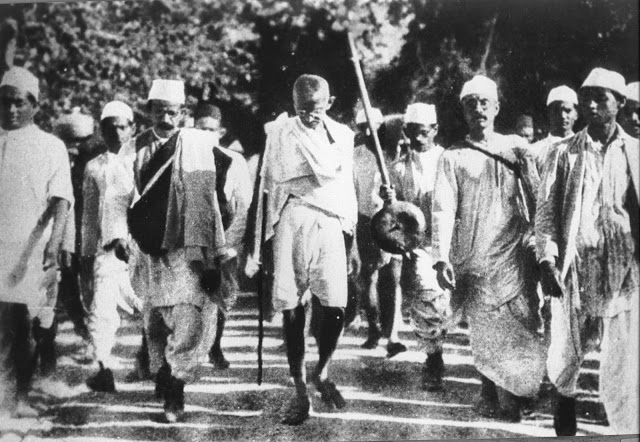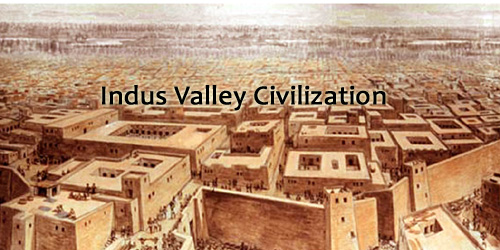
Founder of Buddhism:
Gautam Buddha was the founder of Buddhism, he was born in 563 BC as Prince Siddhartha on the Vaisakha Poornima day at Lumbini (near Kapilvastu) in Nepal.
Prince Siddhartha:
His father Suddhodana was a ruler of Saka dynasty, and his mother Mahamaya was of Kosala dynasty.
Stepmother Gautami:
His mother died only after 7 days of his birth. He was brought up by his stepmother Gautami.
Marriage and Son:
He got married at the age of 16 to Yashodhara. He had a son named Rahula.
Mahabhinishkramana:
At the age of 29 Gautam Buddha left the palace in search of truth, the event was known as ‘Mahabhinishkramana’.
Nirvana:
He wandered for 6 years in the search of truth and finally attained ‘Nirvana’ or ‘Enlightenment’ at Gaya in Magadh (Bihar) under the Pipal tree.
Horse n Charioteer:
Buddha’s favorite horse was Kanthaka and charioteer was Channa.
Teachers of Buddha:
For the first time, Buddha meditated with Alara Kalama, his next teacher was Udraka Ramputra.
Ascetics:
Buddha joined five ascetics namely Kondna, Vappa, Bhadiya, Mhanama, and Asagi.
First Sermon (Buddhism)
Mahatma Buddha delivered the first sermon at Sarnath, his first sermon is called “Dharmachakrapravartan” or “Turning the Wheel of Law”.
Mahaparinirvana
Mahatma Buddha attained Mahaparinirvana at Kushinagar in 483 BC at the age of 80 in the Malla republic.
Tripitakas (Buddhism)
Buddhist Literature is mainly written in Pali Language. Buddhist scriptures in Pali are commonly referred to as Tripitakas, i.e. ‘Threefold Basket’.
Vinaya, Sutta, and Abhidhamma
Vinaya Pitaka is the rules of discipline in Buddhist monasteries. Sutta Pitaka is largest, and it contains a collection of Buddha’s sermons. Abhidhamma Pitaka explains the philosophical principles of the Buddhism.
Mahavansh and Deepvansh
Mahavansh and Deepvansh are other Buddhist texts; these provide information about then Sri Lanka.
Dhamma and Sangha
Buddha’s teaching are called Dhamma and the Order of Buddhist monk and nuns is known as Sangha.
Must Read:





Good
Thanx nice information.
Thanking for your useful information for every body. This knowledge very difficult to get. Once again I would like to say thanks.
D G Raghunath. Email: dgraghunath@gmail.com
VERY GOOD KNOWLEDGE.
Important piece of information..
Thanks a lot for sharing.
Buddhism religion teaches us the true life but not the way of life
My friend I didnt understand that on what basis you came to this conclusion that buddhism teaches only true life and not the way of life. So in this regard i would like to let you know that Buddhism definitely shown us the noble way of life. It explains how one can lead a peaceful and healthy life without harming other, not only by physical means but also by harsh thoughts also. Buddhism gave us the summary of all his teachings in a very absolute manner… in the form of Trishran and Asthang marg.
His teaching include ample knowledge for a layman how to lead a happy and noble life. His teaching is all about journey form birth to the end of life.
I suggest you to read the Buddhist literature throughly and get answers of all our problems..
have a peaceful day!
Sir please cse csat guidance
thanking for usefull information…
is it saka dynasty or sakya dynasty.It is sakya dynasty… plz check it once
Shakya is a clan of the ancient Vedic period(1500-500 BCE). The name is derived from the Sanskrit word śakya which means capable, able. The Śākyas formed an independent republican state, known as Sakya Gaṇa-rājya. The Śākya capital was Kapilavastu in present-day Nepal, which lies near the border of the present-day Uttar Pradesh state of India.
hmmm gud
Knowledgeable one….sir plz send all those topics which u update on this site….i would be thank ful if u do so….
email id ….khanbond1995@gmail.com
plzz plzz plz sirr.
tere baap k pass itna time hota toh teri ghar aake free me sikha na deta tujhe wo ….
The teaching of Lord Buddha was called Dhamma, keeping this view, is Dharma a same theme which we understand Dhamma means growth of ‘Virtue and Righteousness’ over wrongdoing or something vice-versa?
sir, plz verify
very important information……
gud
plz give some tips about meditation i want to get spirutual power
One week ago I went to Saranath a good place
It will be harsh to claim that Buddha is founder of Buddhism. There is no life event in the life of the Buddha when he sets to found religion,nor in the Tripitaka there is a word like Buddhism. Much later in the history of Ancient India people required to differentiate themselves from non followers, the word must have been used.
The fact that India was predominantly a Buddhist nation till 10th century AD is almost forgotten,although it is becoming a common knowledge nowadays, more importantly this was not an imposed religion,rather accepted by people themselves. By the end of 12 century where university like Nalanda and many others were destroyed with the help of foreign invasion marks the time of darkest phase of history of India. As long as the literature was available to common people it as impossible for anyone to rule the nation.
With the fall of “Dhamma” the nation got into clutches of “Bhramanism”,Nation got divided into castes and subcastes with knowledge a subject only to Bhramans.
Bhramanism now became “Hinduism” around 13th century AD. At around 7th century a cult emerged of making Buddha as an Avatar of Vishnu. At around 10th century it was then established in the minds of people. Similar situation is also shown in the movie O My GOD(OMG) where a revolutionary character was declared as 11th avatar of Vishnu.
There has been huge political drama in the history of Ancient and Medieval India, Books by K Jamnadas,L.M Joshi, Pandit Nehru does give a good insight on political nature of History of India. “Decline and fall of Buddhism” by Dr. Jamnadas, “Riddles in Hinduism” by Dr. Ambedkar, Essays of Pandit Nehru on “Aryans” recently published “The Hindus” by Dr.Wendy Doniger all has vital information to all those who ever wish to know “The India” in practical manner.
Any interested student person can check this link to know more on Buddhism in India, its Decline and its fall.
http://www.buddhistculture.net/decline-and-fall-of-buddhism-in-india.html
Ishan,
Glad to know your knowledge. As you absolutely say.. It’s a life science which is spread everywhere. The one connected with or in practice of truth always lives a life of kindness and in dharma. My well wishes for all..
i think u should read books before commenting such kind of thing
upsc exam paper book in website model exam question
U r illiterate regarding buddhism…
Thanks for your useful information about gautam budhha andi his own life
Nice work
Keep it very up….thanks
Add this information:
Buddha meditated 49days under the pipal tree which was in the crop. Field of SAMAGUDU.
her daughter fed up Buddha for 48 days and on 49th day he discovered the truth
I need all the these kind of material if u can plz mail ne to Tejaswinibhuvana@gmail.com
Of course. Tejaswini….
very true ishan….even todays most f d hindu temples n pilgrimages..once used to b d buddhist vihar’s..
Good one
, goutham budha discovered vipassana meditation is very powerful. every one please practise vipassana meditation
nice one…thanks to inform us about buddhism…
so long as you don’t corrupt it, religion is good, doesn’t matter which faith/religion a person believes in. they all refer to a supreme being. in my opinion, i think its stupid to fight over a person’s religious beliefs . if you dig far enough back, you will see they are all connected and its the human who messes it up, tries to use a corrupt version to control people. just my opinion, others may feel different, but i’m not going to “jump” down their throat because they have a “different” opinion than i.
Comments are closed.